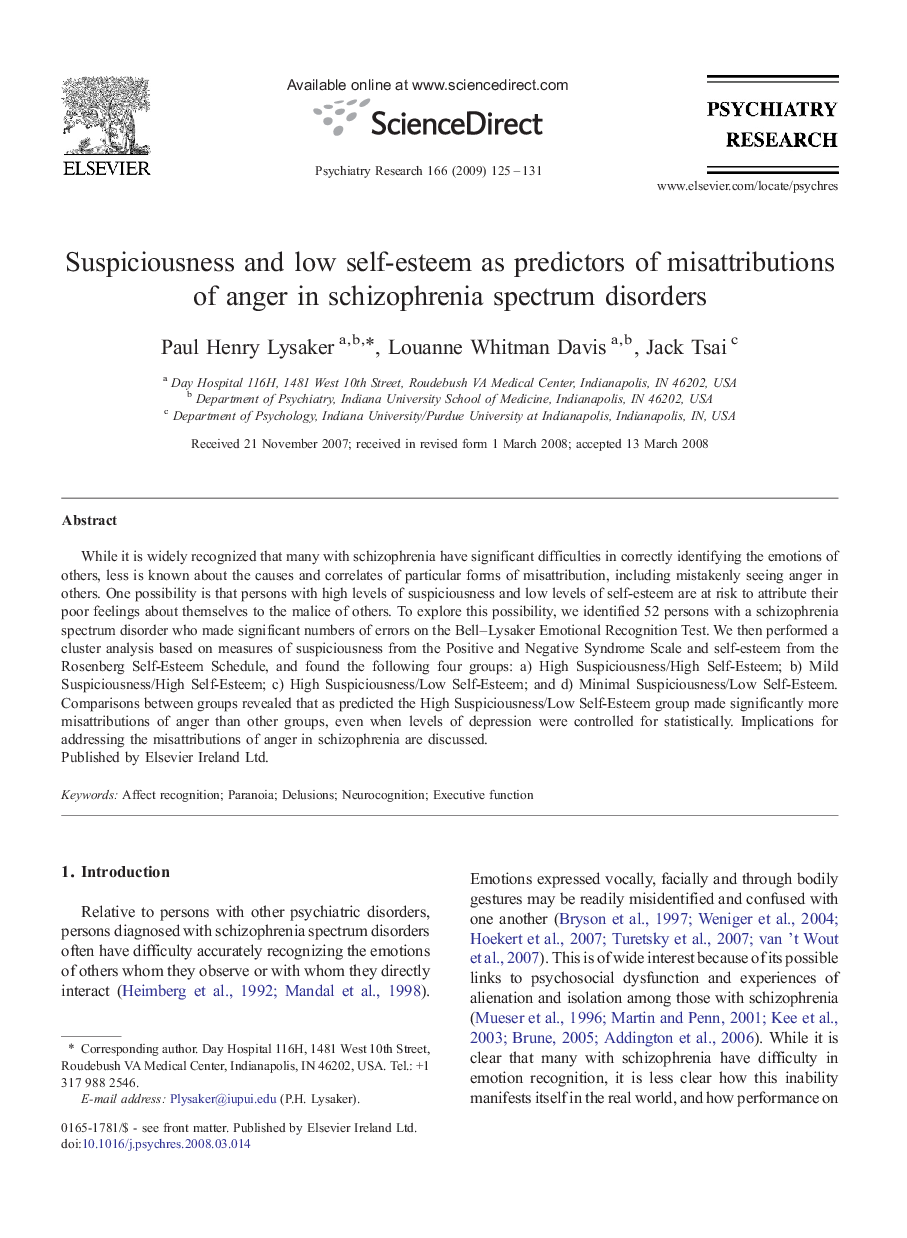| Article ID | Journal | Published Year | Pages | File Type |
|---|---|---|---|---|
| 334209 | Psychiatry Research | 2009 | 7 Pages |
While it is widely recognized that many with schizophrenia have significant difficulties in correctly identifying the emotions of others, less is known about the causes and correlates of particular forms of misattribution, including mistakenly seeing anger in others. One possibility is that persons with high levels of suspiciousness and low levels of self-esteem are at risk to attribute their poor feelings about themselves to the malice of others. To explore this possibility, we identified 52 persons with a schizophrenia spectrum disorder who made significant numbers of errors on the Bell–Lysaker Emotional Recognition Test. We then performed a cluster analysis based on measures of suspiciousness from the Positive and Negative Syndrome Scale and self-esteem from the Rosenberg Self-Esteem Schedule, and found the following four groups: a) High Suspiciousness/High Self-Esteem; b) Mild Suspiciousness/High Self-Esteem; c) High Suspiciousness/Low Self-Esteem; and d) Minimal Suspiciousness/Low Self-Esteem. Comparisons between groups revealed that as predicted the High Suspiciousness/Low Self-Esteem group made significantly more misattributions of anger than other groups, even when levels of depression were controlled for statistically. Implications for addressing the misattributions of anger in schizophrenia are discussed.
